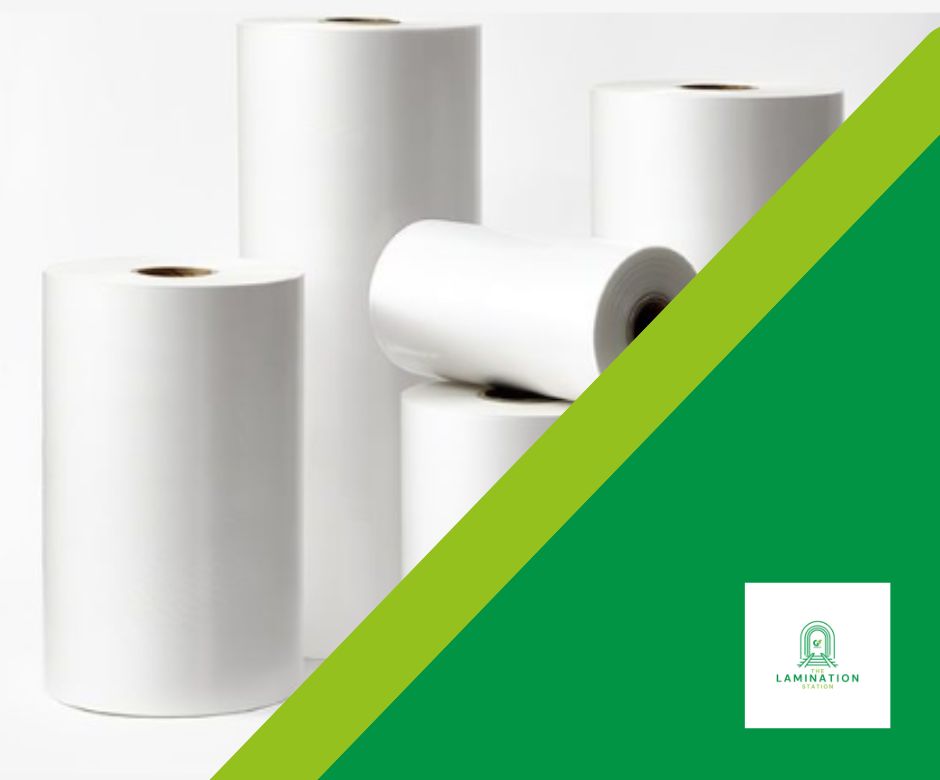Wet Lamination Films
BOPP, PET, and Cellulose Wet lamination films can be an environmentally friendly and cost-effective option for your laminating applications. At Gif Products, our Wet lamination films are commonly used to over-laminate printed media on various substrates for the graphic arts market, along with labelling and the flexible packaging market.
If you would rather watch the rest of this blog in video format, click the link below:
Wet Lamination Process
Wet lamination involves applying a liquid adhesive between two or more layers of materials, such as plastic films, paper, board, and foils. First, the adhesive is applied directly onto the film using a roller or other applicator. Then, the film and the substrate are brought together and passed through a set of pressure rollers, forming a strong bond between the two materials. As a result, this process ensures durability and adhesion.
Available Finishes
Wet lamination films come in various finishes, including gloss, matt, silk, anti-scratch, holographic, metalised, and tactile finishes such as velvet and embossed. Not only do these finishes help to protect, enhance, and create a specific look and feel for the finished product, but they also offer several practical advantages:
- Protection: Wet lamination protects printed materials from moisture, dust, and other environmental factors that could damage the substrate.
- Durability: Wet lamination increases the durability, longevity, and rigidity of printed materials, making them less prone to scratches, tears, and wear. Consequently, this extends the life of your finished product, reducing the need for frequent replacement and saving energy and raw materials.
- Enhanced Colours: Wet lamination enhances the colours of printed materials, making them look brighter and more vibrant.
- Easy to Clean: Additionally, the protective layer that wet lamination creates makes products easier to clean.
Types of Wet Lamination Films
There exist several types of wet lamination films on the market, each with its own advantages:
- BOPP (Bi-Oriented Polypropylene): BOPP is a soft thermoplastic polymer known for its excellent moisture resistance, low density, and cost-effectiveness. Commonly used in applications like book publishing, BOPP offers durability and flexibility and is recycled easily, making it a preferred plastic in today’s markets.
- PET (Polyethylene Terephthalate): PET delivers strength, stability, and resistance to moisture, oils, and chemicals. PET films work well for laminating documents, graphics, and labels, offering high clarity and scuff resistance. Moreover, they serve widely for flexible packaging and high-quality graphics.
- Cellulose Acetate: Made from wood pulp, Cellulose Acetate is certified biodegradable and compostable. Its high chemical resistance, clarity, scuff resistance, and excellent printability make it a sustainable choice for various applications.
Processing Considerations
BOPP and Cellulose films process more easily with standard perforation or edge knife systems commonly found on wet laminating machines. However, PET films require more specialised equipment, such as a hot knife or flying knife system.
Conclusion
Wet lamination films offer numerous advantages in the graphic arts and packaging industries. As a result, they are a popular choice for environmentally conscious companies, providing protection for printed materials, enhancing their appearance, and increasing their durability. Ultimately, the choice between BOPP, PET, and Cellulose Acetate films depends on the specific application and desired properties of the final product. At Gif Products, we offer a wide range of high-quality wet lamination films, allowing for customization to suit diverse applications.
To find out more about our Lamination Films, CLICK HERE to contact us.

